Montana Custom Knife Art
Knife Art: The Cutting Edge
Looking out of the taxi window, Josh Smith was thinking more about the forthcoming meeting with a sheikh than London’s cityscape. Would there be a royal officer to translate between Arabic and English? Would armed guards be standing nearby? Would the occasion be extremely formal with Arab regalia?
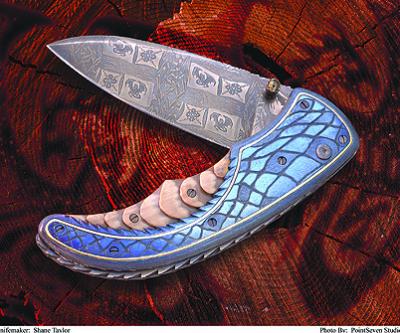
The son of the Emir of the United Arab Emirates turned out to be friendly and informal. He was wearing blue jeans; no one was with him; and since he’d been educated in Florida, he visited with Smith in flawless English.
The sheikh wanted Josh Smith to see and handle a sword in one of London’s museums. The two of them discussed how Smith would make a sword to the sheikh’s specifications. Later when Smith had the sword ready to deliver, the sheikh sent tickets for Smith and his wife to fly to Abu Dhabi, the capital of the United Arab Emirates, to deliver it.
Besides visiting London and Abu Dhabi, Smith has been to Paris and Boston and eaten in fantastic restaurants where the chefs purchased handmade culinary knives. Law enforcement personnel who also wanted to purchase handmade knives have guided him around New York City. “Getting to know people throughout the world and seeing where they live are the fringe benefits of knife making,” he said.
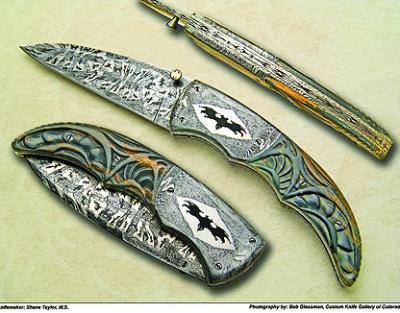
Growing up in the small town of Lincoln, Montana, Smith, 30, started making knives when he was only eleven. His Little League coach, Rick Dunkerley, would bring knives to baseball practice to show the parents. Little Josh had his nose right in there and listened to every word the knife-making legend had to say. That Christmas Josh’s parents gave him a Dunkerley knife for a gift, and Dunkerley offered to help Smith make a knife. Smith never turned back. He sold his first knives when he was 12 to his science and math teachers. At 15 he earned his Journeyman Smith certification through the American Bladesmith Society (ABS), and when he was 19, he earned Master Smith certification. He was the youngest person ever to earn these certifications.
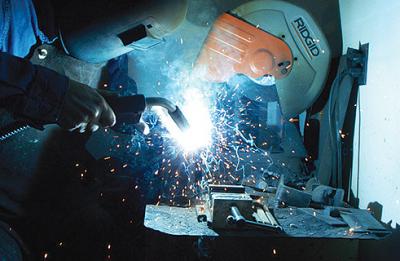
“I consider myself an all-around knife maker,” said Smith who now lives in Frenchtown, Montana. “My specialty is diversity. Because my knives sell for up to $8,000, I’m considered to be in the art knife class. Any of my knives becomes an investment piece for the purchaser.”
Knife making has many facets; it takes hours, months, and—sometimes—years to make an art knife. The foundation for any handmade knife is a quality-working knife. If art knives are the objective, they are often made of Damascus steel, which provides a fine and supple blade. A heat and pressure process is used by forge-welding different kinds of metals together in layers so that they become solidly bonded. The contrast between the different shades of gray and charcoal-colored steel extends through the blade and develops an irregular design on the surface.
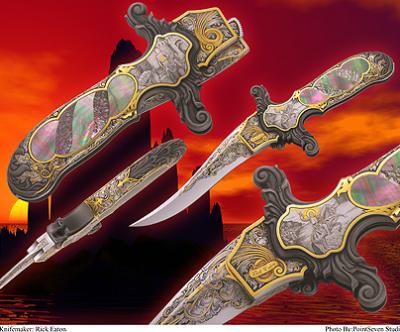
The even more difficult mosaic Damascus involves controlling the process by positioning various kinds and shapes of metal to make a predetermined design. Montana art knife makers also embellish their knives with gold inlay, engraving, pearl and enamel inlays, file work, and woodcarving to make a really beautiful piece.
Another highly skilled smith is Joe Olson who majored in art in college, taught art, and then worked as a carpenter before he was bitten by knife making. The specialty of this Journeyman Smith is designing art knives. “I use enamel color inlay in the handle to develop a narrative,” said Olson of Geyser, Montana. Pictures of a deck of cards, hunters, faces of women with long-flowing hair, wildlife, or guitars often carry the story told in the knife. “It has been both challenging and entertaining,” he said. “It only works if I do it all myself.”
Like Olson, Steven Kelly of Bigfork is certified by ABS as a Journeyman Smith. When working in his first career as a deputy sheriff, he decided to make a quality knife. Even before he finished that knife, he knew that he was driven to learn all aspects of knife making. “It’s the Irish in me to make the best knife I can possibly make each time I make one,” he said. In 2009, he became a full-time knife maker with an emphasis on sole-authorship, tactical straight knives, and folders. Some of these knives are made with Damascus patterns.
Another knife maker, Rick Eaton, grew up in Northern California where he made a black powder rifle. That interest led to making knives. Early on, he knew he would be happier if he could find his way to a ranch in Montana where he could make knives and raises horses.
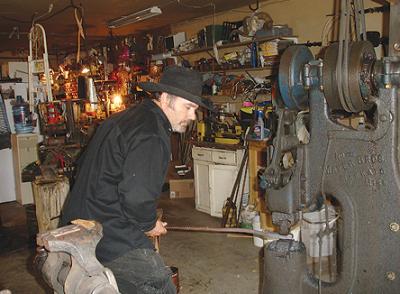
Eaton is an example of the patient knife maker. It took him two years to make what he calls the King Arthur Set that was purchased by the nephew of the Sultan of Brunei. “Selling those knives helped me get that ranch near Broadview, Montana,” he said.
Since 2007, Eaton, known especially for his engraving skills, has been invited to exhibit at the exclusive Art Knife Invitational held biennially in San Diego. Twenty-five of the world’s top knife makers and one hundred seventy-five “discriminating” collectors are invited to this one-day show. Each knife maker is allowed to bring three to eight knives to exhibit.
Having also earned Master Smith through the ABS, Shane Taylor grew up on a ranch outside of Miles City and made his first knife only because his brother had made one. While in high school, Taylor continued making one annually. By 1992, he had two full-time jobs, working on the ranch and making knives. The knives won out, and he moved to Miles City to open a shop there. “I didn’t choose knife making. It chose me,” he said.
Taylor’s specialty is mosaic Damascus knives. “I like to make knives that look old—as if they had come out of a tomb,” he said. He is in the process of making a series of seven knives of which three have been completed and sold to two collectors. These knives tell the story of the conflict between good and evil. He likes to think that someday the seven knives will find their way into one person’s collection.
Knife making has also given Taylor the opportunity to travel. Several years ago when he and his wife were at the knife show in Paris, Taylor was wearing a cowboy hat but didn’t want to take it to Scotland where they were going to vacation before returning to Montana. He put out the word that he wanted to sell his hat. Two Swedish knife makers were kidding around about the hat, and one put it on the other one. “With that, I sold my Montana cowboy hat to a Swedish knife maker,” he said.
All of the above knife makers have a backlog of orders. “I have people who are waiting to be on the ‘waiting list’,” said Steven Kelly. Customers, who live all around the world, know what it takes to make these high-quality custom knives and are willing to wait for that very special knife to be made in a shop somewhere in the mountains or on the prairie of Montana.
****************
Enjoy the Big Sky Country Conference hosted by Montanan knife maker, Josh Smith and his wife, in Frenchtown July 14-15, 2012. World-renowned knife makers will be teaching classes on all phases of knife making. Everyone has the opportunity to meet and mingle with the expert knife makers and collectors during this event that is open to knife makers of all abilities. Find detailed information at http://www.joshsmithknives.com/
After a career as a college instructor and administrator, Suzanne Waring’s interest in communications led to a second career as a freelance writer. She lives in Great Falls and writes about Montana people and their communities.





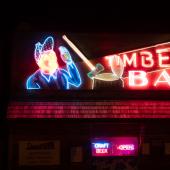
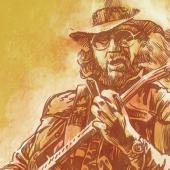
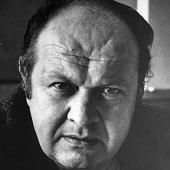
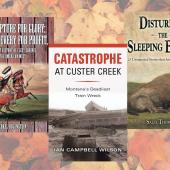
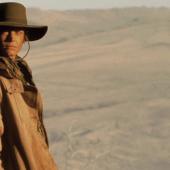


Leave a Comment Here